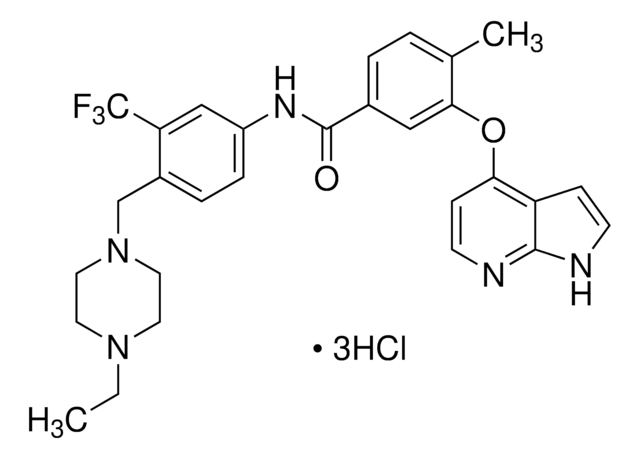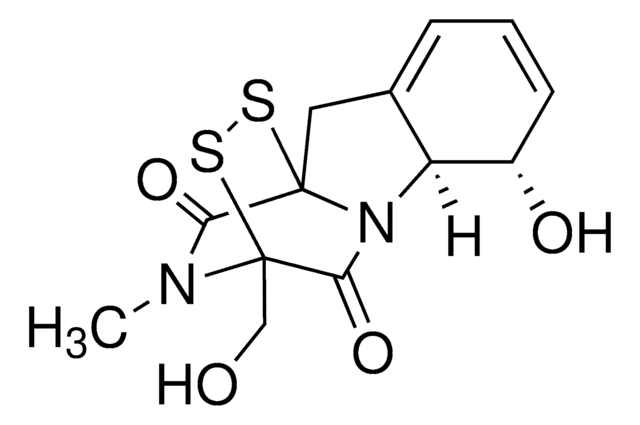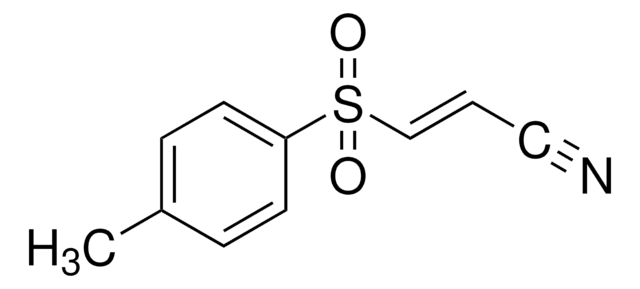O9890
5Z-7-Oxozeaenol
≥98% (HPLC), powder, TAK1 inhibitor
Synonym(s):
C 292, F 152, FR148083, L 783279, LL-Z1640-2
About This Item
Recommended Products
product name
5Z-7-Oxozeaenol, ≥98% (HPLC)
Assay
≥98% (HPLC)
form
powder
color
white to off-white
solubility
DMSO: >10 mg/mL
storage temp.
2-8°C
SMILES string
COc1cc(O)c2C(=O)O[C@@H](C)CC=CC(=O)[C@@H](O)[C@@H](O)C\C=C\c2c1
InChI
1S/C19H22O7/c1-11-5-3-7-14(20)18(23)15(21)8-4-6-12-9-13(25-2)10-16(22)17(12)19(24)26-11/h3-4,6-7,9-11,15,18,21-23H,5,8H2,1-2H3/b6-4+,7-3-/t11-,15-,18+/m0/s1
InChI key
NEQZWEXWOFPKOT-BYRRXHGESA-N
Application
- as transforming growth factor β-activated kinase 1 (TAK1) inhibitor to treat human colon cancer cells
- as TAK1-specific inhibitor to provide intraperitoneal injection to mice for aortic banding
- as TAK1 inhibitor to treat cells for luciferase reporter assay
- to test growth and differentiation factor 2 (GDF2)-mediated anoikis
Biochem/physiol Actions
Features and Benefits
Storage Class Code
11 - Combustible Solids
WGK
WGK 3
Flash Point(F)
Not applicable
Flash Point(C)
Not applicable
Certificates of Analysis (COA)
Search for Certificates of Analysis (COA) by entering the products Lot/Batch Number. Lot and Batch Numbers can be found on a product’s label following the words ‘Lot’ or ‘Batch’.
Already Own This Product?
Find documentation for the products that you have recently purchased in the Document Library.
Customers Also Viewed
Articles
The extracellular signal regulated kinase (ERK1 and ERK2) pathways are activated by mitogens and play an important role in controlling cell growth and differentiation.
The extracellular signal regulated kinase (ERK1 and ERK2) pathways are activated by mitogens and play an important role in controlling cell growth and differentiation.
The extracellular signal regulated kinase (ERK1 and ERK2) pathways are activated by mitogens and play an important role in controlling cell growth and differentiation.
The extracellular signal regulated kinase (ERK1 and ERK2) pathways are activated by mitogens and play an important role in controlling cell growth and differentiation.
Our team of scientists has experience in all areas of research including Life Science, Material Science, Chemical Synthesis, Chromatography, Analytical and many others.
Contact Technical Service
















